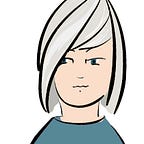Cultural Evolution — part 1/3: competition, cooperation, and the human tendency to copy others without knowing it!
I spend a lot of time thinking about ways of tackling really hard kinds of change: challenges such as shifting collective behavior to address political deadlock and climate change. I keep thinking that there must be insights I could glean from the way things have come to be the way they are — that is, by understanding their evolution. Most designed social systems — whether for business, education, or politics — seem to have embedded in them, a belief that competition is what will help individuals and social systems to progress in the directions we desire. But is competition really the only driver of individual and collective change?
I sat down with Michael Muthukrishna, a researcher who studies cultural evolution, to hear his perspective. In a recent talk, Michael shared a story about Jeffrey Skilling, the former CEO of Enron who adopted a hyper-competitive system of rank and yank, believing it would drive excellence. Twice a year, managers gathered to evaluate employees, firing the bottom 10–15%. but rather than driving performance, it created internal competition and people ended up inflating their results to help protect their jobs.
Michael points out that while competition is sometimes a good way of getting what you need, there are resources we can access only through cooperation. For instance, we humans need the help of beneficial bacteria for many biological functions, for instance in digesting certain foods. We can hunt rabbits solo, but landing a buffalo requires cooperating with others, at least prior to guns. These examples of cooperative action — one biological, the other social — don’t negate the influence of competition, but they do suggest that there is more to the workings of selection than just competition. A central aim of cultural evolution researchers is to understand how things like language, industry, and the internet emerge, in light of our evolving biology.
A theory of dual inheritance offers an explanatory bridge between our genetic evolution and our collective human accomplishments. The gist of the theory is that once we reached a certain capacity to learn from others, a second strand of evolution was kicked off. In Joseph Henrich’s book The Secret of Our Success, Henrich suggests that once all this social learning started accumulating across generations, the honing of our capacities to get, process, store and organize the stuff we pick up from others became THE primary driver of human genetic evolution. These two strands form and inform each other, creating a co-evolutionary process. The Secret in the title of Henrich’s book is not that we are the smartest species on the planet, but that our ability to learn from each other has led to a collective intelligence that far outstrips our individual smarts.
Henrich’s book covers a wide array of culturally evolved, adaptive practices ranging from labor-intensive food preparations that remove toxins, to divination rituals that essentially randomize where farmers plant, helping them to avoid crop failure due to soil depletion. Like genetic adaptations, these behavioral adaptations emerge out of loopy causal mechanisms [ transmission, variation, and selection] over long periods of time.
Evolution only gets rolling once there is a way to transmit “stuff” across time: transmission of genes makes genetic evolution possible, transmission of know-how & tools makes cultural evolution possible. A key force in cultural transmission is our human tendency to copy others without knowing why.
· We copy people who can do things we want to be able to do [skills]
· We copy people to fit in,
· We copy people who are prestigious, and
· We copy whatever the majority of people are doing.
Imagine someone named Chris who is incredibly successful in business. If you’re a little person you want to be just like Chris, but you don’t know what it is they do that brings this success. Maybe it’s where Chris went to college, their morning routine, or where they work, but it could also be that they wear a particular brand of clothing, follow a Keto diet, or that they are a member of their local Rotary club. To be like Chris, the best thing this little human can do is copy everything about them. As kids copy the Chris’s of each generation, knowledge and skills accumulate without even Chris knowing exactly why what she does makes her so successful.
Evolution has supplied us with this tendency to copy successful others, but how does this shed light on the dynamics of competition and cooperation?
In the next installment in the series we’ll dig into Game Theory & how it sheds light on these tensions.
In an effort to make work that is freely shareable, I opt out of Medium’s paywall. If you find my animations useful, consider becoming a patron on Patreon: https://www.patreon.com/researchArtist
This animation was created in collaboration with Michael Muthukrishna. Michael is an Associate Professor of Economic Psychology at the London School of Economics (LSE). His other affiliations include Associate of the Department of Human Evolutionary Biology at Harvard University, Affiliate of the Developmental Economics Group at STICERD, and Technical Director of The Database of Religious History.
Michael’s research focuses on answering three broad questions: (1) Why are humans so different to other animals? (2) What are the psychological and evolutionary processes that underlie culture and social change, and how is information transmitted, maintained, and modified? (3) How can the answers to these questions be used to tackle some of the challenges we face as a species? He uses a two-pronged methodological approach to answer these questions, combining mathematical and computational modeling (evolutionary models, social network models, etc.), and experimental and data science methods from psychology and economics. He uses the “Theory of Human Behavior” that emerges from this approach to tackle a variety of related topics, including innovation, corruption, the rise of large-scale cooperation, and the navigation of cross-cultural differences.
